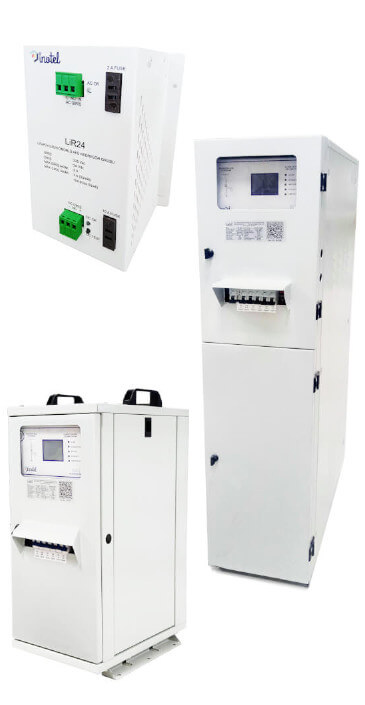- info@inotelelk.com
- Ostim OSB Mah. Turan Çiğdem Cad. No: 7/1 06374 Yenimahalle / Ankara
Rectifiers are essential devices in various electrically powered systems. At their core, they are used to convert alternating current (AC) into direct current (DC), playing a vital role in many industrial applications. So, what is a rectifier, and why is this conversion so critical? Alternating current is the most commonly used type of electricity in our daily lives. From household outlets to grid systems, most energy is transmitted in AC format. This is because AC is more efficient for transmitting electricity over long distances at high voltages. However, many electronic devices we use daily operate on direct current. The alternating current that reaches our homes is not suitable for these devices. Direct current is a type of electrical flow that moves steadily in one direction. It is the kind of electricity required by battery-powered devices, for example. But how is this conversion from AC to DC achieved? That’s where the rectifier comes into play.

A rectifier primarily provides electrical conversion. It takes the alternating nature of AC (alternating current), where the current direction changes periodically, and converts it into a one-way, continuous direct current (DC). This conversion is typically carried out using different types of rectifiers, such as half-wave or full-wave rectifiers. Each method has its own advantages and application areas, which has led to the development of various rectifier types:
Half-Wave Rectifier: This is the simplest type. It uses only one half-cycle of the AC signal, discarding the other half. Although it is limited in efficiency, it is suitable for low-cost and basic applications.
Full-Wave Rectifier: This type utilizes both halves of the AC cycle, providing a more efficient conversion. It increases output efficiency and is generally preferred for higher-power devices.
Phase-Controlled Rectifiers: Used in more complex systems, especially in industrial applications, these rectifiers convert three-phase AC into DC. They are ideal for situations requiring high efficiency and substantial current capacity.
Rectifiers are used across a wide range of applications, particularly in telecommunications, energy storage systems, and industrial operations. For instance, in the telecommunications sector, a stable DC current is essential for the operation of fixed telephone lines and internet infrastructure. In data centers, uninterruptible power supplies (UPS) work in conjunction with rectifiers to ensure that critical systems remain operational during power outages. Another key example is in renewable energy systems. Electricity generated from sources like solar panels and wind turbines is typically in DC form. However, before this energy can be integrated into the grid, it must be converted into AC using inverters, which perform the reverse function of rectifiers. Meanwhile, the batteries used in energy storage systems still require DC power, which is supplied by rectifiers. In conclusion, rectifiers play a critical role in modern electrical and energy management. By converting alternating current into direct current, they enable reliable operation of electronic devices, support energy storage, and ensure the stability of telecommunications infrastructure. These devices are the unseen enablers behind efficient energy usage and technological advancement.
Key Functions:
✅ Converting AC to DC for equipment that requires stable and unidirectional power
✅ Providing power to battery charging systems
✅ Supporting uninterrupted power supplies (UPS)
✅ Enabling operation of DC-powered industrial automation and control panels
Rectifiers are a fundamental component in modern electrical infrastructure. Their ability to convert alternating current (AC) into direct current (DC) makes them essential in a wide range of systems — from industrial automation and telecommunications to renewable energy and backup power solutions. Without rectifiers, the operation of many DC-powered devices and systems would not be possible. They ensure the stable and reliable supply of DC power, which is crucial for the performance, safety, and continuity of electrical systems. In environments where precision and uninterrupted power are vital — such as data centers, control panels, or telecommunication networks — rectifiers serve as the backbone of power stability. As our reliance on digital technologies, battery-based systems, and renewable energy grows, rectifiers continue to be indispensable. They are not just passive electrical components — they are key to ensuring energy efficiency, system longevity, and operational continuity in an increasingly electrified world.